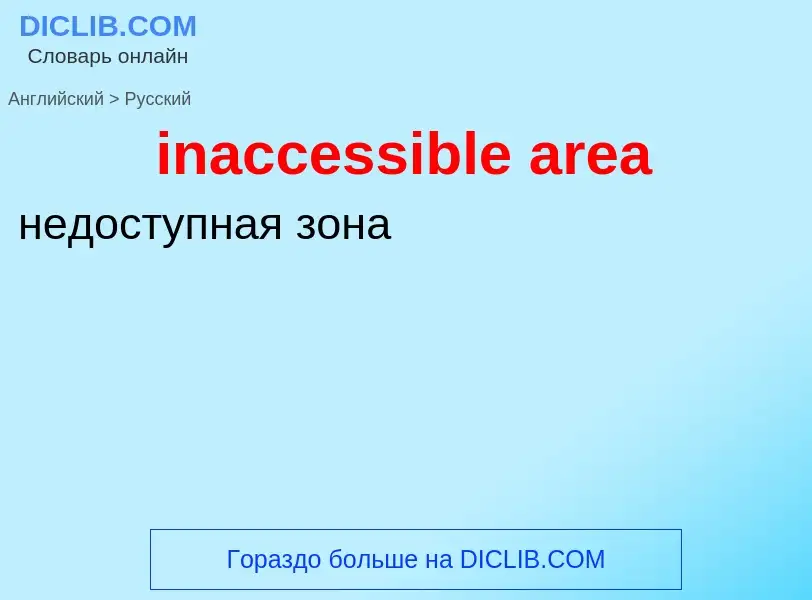Translation and analysis of words by ChatGPT artificial intelligence
On this page you can get a detailed analysis of a word or phrase, produced by the best artificial intelligence technology to date:
- how the word is used
- frequency of use
- it is used more often in oral or written speech
- word translation options
- usage examples (several phrases with translation)
- etymology
inaccessible area - translation to russian
математика
недостижимое кардинальное число
математика
слабо недостижимый
Wikipedia
In set theory, an uncountable cardinal is inaccessible if it cannot be obtained from smaller cardinals by the usual operations of cardinal arithmetic. More precisely, a cardinal κ is strongly inaccessible if it is uncountable, it is not a sum of fewer than κ cardinals smaller than κ, and implies .
The term "inaccessible cardinal" is ambiguous. Until about 1950, it meant "weakly inaccessible cardinal", but since then it usually means "strongly inaccessible cardinal". An uncountable cardinal is weakly inaccessible if it is a regular weak limit cardinal. It is strongly inaccessible, or just inaccessible, if it is a regular strong limit cardinal (this is equivalent to the definition given above). Some authors do not require weakly and strongly inaccessible cardinals to be uncountable (in which case is strongly inaccessible). Weakly inaccessible cardinals were introduced by Hausdorff (1908), and strongly inaccessible ones by Sierpiński & Tarski (1930) and Zermelo (1930).
Every strongly inaccessible cardinal is also weakly inaccessible, as every strong limit cardinal is also a weak limit cardinal. If the generalized continuum hypothesis holds, then a cardinal is strongly inaccessible if and only if it is weakly inaccessible.
(aleph-null) is a regular strong limit cardinal. Assuming the axiom of choice, every other infinite cardinal number is regular or a (weak) limit. However, only a rather large cardinal number can be both and thus weakly inaccessible.
An ordinal is a weakly inaccessible cardinal if and only if it is a regular ordinal and it is a limit of regular ordinals. (Zero, one, and ω are regular ordinals, but not limits of regular ordinals.) A cardinal which is weakly inaccessible and also a strong limit cardinal is strongly inaccessible.
The assumption of the existence of a strongly inaccessible cardinal is sometimes applied in the form of the assumption that one can work inside a Grothendieck universe, the two ideas being intimately connected.

